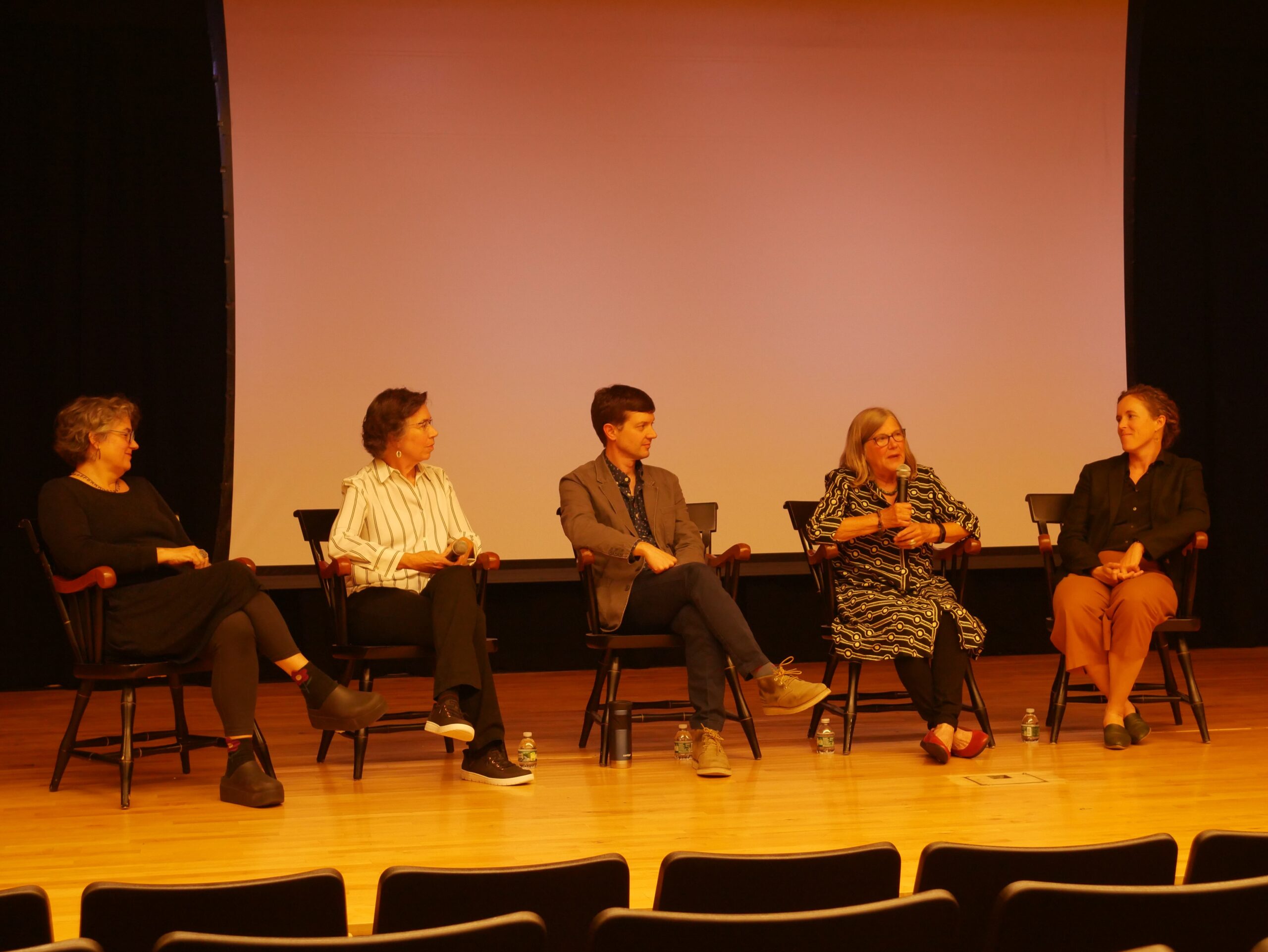Kent Island: the causeway between art, science and inspiration for new exhibit in Zero Station Gallery
October 11, 2024
 Abigail Hebert
Abigail HebertArtists, writers, researchers and students met in Kresge Auditorium last Thursday night to discuss creating a bridge between the humanities and the natural sciences. The discussion was sparked by the opening of the exhibit “Floating Worlds: The Intersections of Art, Science and Poetry” at the Zero Station Gallery in Portland the night before, which features the works of last summer’s artists-in-residence at the Bowdoin Scientific Station on Kent Island.
The panel began with an introduction by moderator Anne Goodyear, co-director of the Bowdoin College Museum of Art, who welcomed Assistant Professor of Biology and Director of the Bowdoin College Scientific Station on Kent Island Patty Jones. Jones gave a brief introduction to the research history of the island, saying that it has been the source of more than 250 scientific fellowships and home to more than 450 student researchers since Bowdoin acquired it in 1936.
“There’s something about living in a field station where your life and your work are all intermixed together, and it is deeply immersed in the outdoor space and in nature,” Jones said.“And I think that leads to a lot of these creative ideas about how we think about these intersections and what are different ways that we can engage with the central world that we’re living in.”
Student artists have worked alongside researchers on Kent Island since the late 1980s, a program established by Jones’s predecessor Nathaniel Wheelwright, professor of natural sciences emeritus. More recently, professional artists have visited the island during the summer to talk to the student researchers about seeing the island as more than a scientific station and enhancing their research through artistic expression. This year, Visiting Assistant Professor of Visual Art Mary Hart, J.E. Paterak, who owns the Zero Station gallery, and Stefan Petranek ’99 were three artists who spent time at the island over the summer.
The next person to step on stage was poet Alison Hawthorne Deming, who juxtaposed the scientific jargon with three poems about storm petrels, a bird studied on the island. Deming emphasized how the emotion researchers feel for what they are studying is overlooked in their scientific publications. She shared images displaying the loving way researchers interacted with the animals and environments they studied.
“On the left, you see the data collection. This is what it’s about. Can’t do the science without that, right? That’s the data, but on the right is the experience. Now it will never go in the data. What is in that man and in that man’s hand, the experience of love and care and tenderness.… To be able to tell the story that includes both.… I think that’s what we’re about in our collaborations,” Deming said.
Petranek then spoke about his experience as a former Bowdoin student who, after majoring in biology and minoring in chemistry, has moved away from scientific studies to study the natural world as a photographer.
“I finally realized that I’m only going to live once, and that it’s important to follow your passion.… That led me to applying to Master of Fine Arts programs, because I kept taking photographs all that time,” Petranek said, “So I say to all the students to think about that and use that power, as you will, to make your own path.”
After hearing about Kent Island from the perspective of a biologist, an artist and someone who is a bit of both, the panel portion of the night began. Jones, Deming and Pentranek sat with Hart and Paterak for a discussion led by Goodyear which was followed by questions from the general public.
Among the audience of Bowdoin students and community members was Barbara Snapp, a Kent Island researcher in 1966 who has retired from studying leeches to explore her passion for painting. She raised the importance of broadening scientific knowledge through artistic connection before students reach college by encouraging interdisciplinary thinking in grade schools.
After the event ended, the panelists left the stage and lingered among audience members, many of whom also stood at the crosshairs of art and science.
“As a poet and a scientist myself, I think it’s really important to have people who are at the intersection of these two disciplines on campus, because I feel like a lot of people are not actually aware that they’re more entwined.” Ben Norwood ’25 said.
The exhibit will be on display at Zero Station Gallery until November 16.

Comments
Before submitting a comment, please review our comment policy. Some key points from the policy: